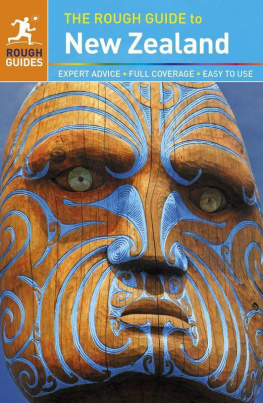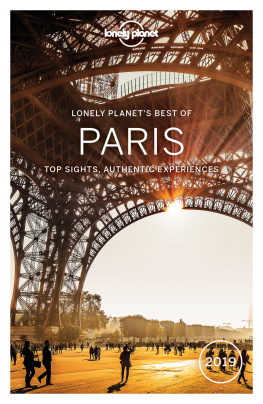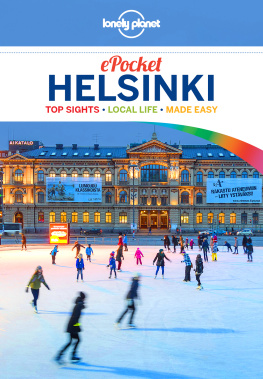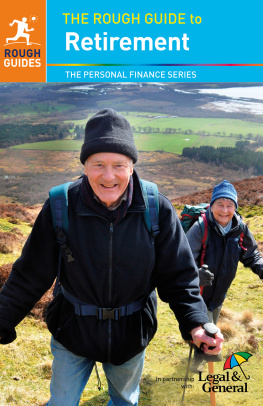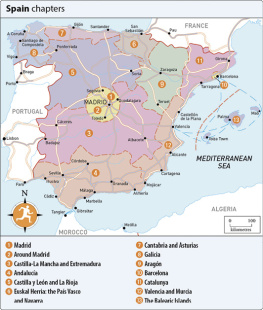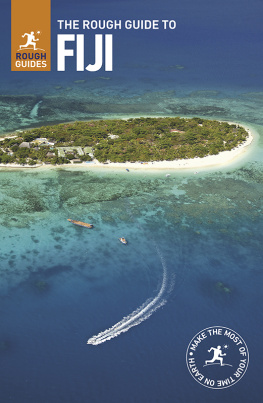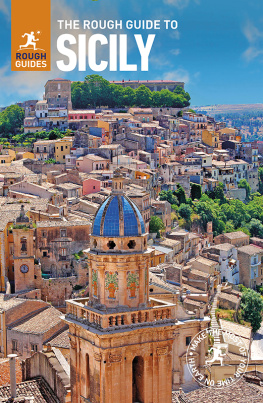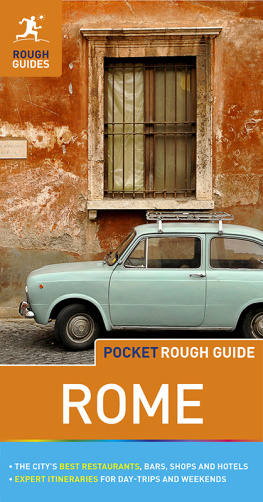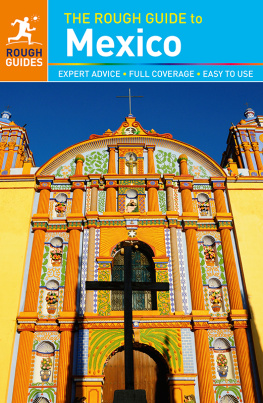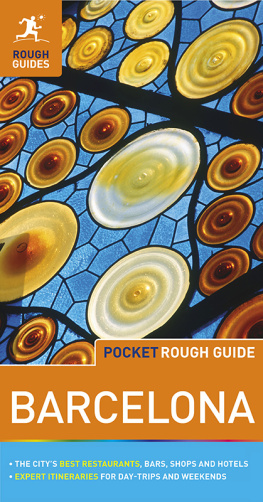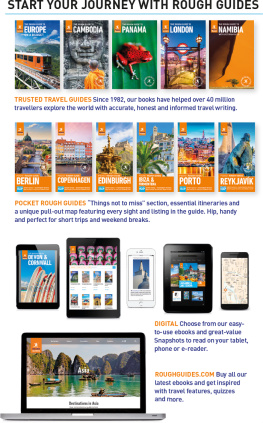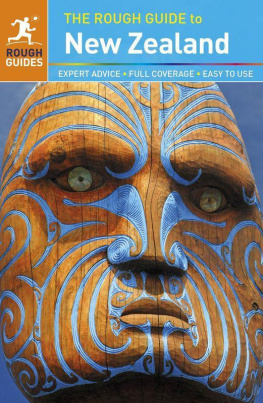Le Nevez Catherine - The Rough Guide to New Zealand (Rough Guide to...)
Here you can read online Le Nevez Catherine - The Rough Guide to New Zealand (Rough Guide to...) full text of the book (entire story) in english for free. Download pdf and epub, get meaning, cover and reviews about this ebook. year: 2012, publisher: Rough Guides, genre: Home and family. Description of the work, (preface) as well as reviews are available. Best literature library LitArk.com created for fans of good reading and offers a wide selection of genres:
Romance novel
Science fiction
Adventure
Detective
Science
History
Home and family
Prose
Art
Politics
Computer
Non-fiction
Religion
Business
Children
Humor
Choose a favorite category and find really read worthwhile books. Enjoy immersion in the world of imagination, feel the emotions of the characters or learn something new for yourself, make an fascinating discovery.
- Book:The Rough Guide to New Zealand (Rough Guide to...)
- Author:
- Publisher:Rough Guides
- Genre:
- Year:2012
- Rating:5 / 5
- Favourites:Add to favourites
- Your mark:
- 100
- 1
- 2
- 3
- 4
- 5
The Rough Guide to New Zealand (Rough Guide to...): summary, description and annotation
We offer to read an annotation, description, summary or preface (depends on what the author of the book "The Rough Guide to New Zealand (Rough Guide to...)" wrote himself). If you haven't found the necessary information about the book — write in the comments, we will try to find it.
The Rough Guide to New Zealand (Rough Guide to...) — read online for free the complete book (whole text) full work
Below is the text of the book, divided by pages. System saving the place of the last page read, allows you to conveniently read the book "The Rough Guide to New Zealand (Rough Guide to...)" online for free, without having to search again every time where you left off. Put a bookmark, and you can go to the page where you finished reading at any time.
Font size:
Interval:
Bookmark:
CONTENTS
HOW TO USE THIS ROUGH GUIDE eBOOK
This Rough Guide to New Zealand is one of a new generation of informative and easy-to-use travel-guide eBooks that guarantees you make the most of your trip. An essential tool for trip planning, it also makes a great travel companion when youre on the road.
From the fills you in on history, books, films, Maori culture and the countrys unique wildlife.
Detailed area maps can be found both at the relevant point in the guide and in the , accessible from the table of contents for easy reference. Depending on your hardware, you will be able to double-tap on the maps to see larger-scale versions fill your screen. Use of the screen-lock function on your device is recommended for viewing enlarged maps.
Throughout the guide, weve flagged up our favourite places - a perfectly sited hotel, an atmospheric caf, a special restaurant - with the author pick icon  . You can select your own favourites and create a personalized itinerary by bookmarking the sights, venues and activities that are of interest, giving you the quickest possible access to everything youll need for your time away.
. You can select your own favourites and create a personalized itinerary by bookmarking the sights, venues and activities that are of interest, giving you the quickest possible access to everything youll need for your time away.


INTRODUCTION TO NEW ZEALAND
Kiwis the people, not the emblematic flightless bird cant believe their luck at being born in what they call Godzone (Gods own country). Year after year, travellers list New Zealand in the top ten of places theyd like to visit and you never meet anyone who has been and didnt love the place. And whats not to like? With craggy coastlines, sweeping beaches, primeval forests, snowcapped mountains and impressive geysers, the scenery is truly majestic. The forests come inhabited by strange birds that have evolved to fill evolutionary niches normally occupied by mammals, while penguins, whales and seals ring the coast. Maori have only been here for 800 years but retain distinct and fascinating customs overlaid by colonial European and increasingly Asian cultures that together create a vibrant, if understated, urban life.
Given this stunning backdrop its not surprising that there are boundless diversions, ranging from strolls along moody windswept beaches and multi-day tramps over alpine passes to adrenaline-charged adventure activities such as bungy jumping, skiing, sea kayaking and whitewater rafting. Some visitors treat the country as a large-scale adventure playground, aiming to tackle as many challenges as possible in the time available.
Much of the scenic drama comes from tectonic or volcanic forces, as the people of Canterbury know only too well following the Christchurch earthquakes of September 4, 2010 and February 22, 2011. The quakes, along with several thousand aftershocks, collectively devastated the city, which is slowly recovering.
Thousands of residents have left Christchurch, but it remains the second-largest city after Auckland , just pushing the capital, Wellington , into third place. Elsewhere, you can travel many kilometres through stunning countryside without seeing a soul: there are spots so remote that, its reliably contended, no human has yet visited them.
Geologically, New Zealand split away from the super-continent of Gondwana early, developing a unique ecosystem in which birds adapted to fill the role of mammals, many becoming flightless because they had no predators. That all changed about 800 years ago, with the arrival of Polynesian navigators, when the land they called Aotearoa the land of the long white cloud became the last major landmass to be settled by humans. On disembarking from their canoes, these Maori proceeded to unbalance the fragile ecosystem, dispatching forever the giant ostrich-sized moa, which formed a major part of their diet. The country once again settled into a fragile balance before the arrival of Pakeha white Europeans, predominantly of British origin who swarmed off their square-rigged ships full of colonial zeal in the mid-nineteenth century and altered the land forever.
An uneasy coexistence between Maori and European societies informs the current wrangles over cultural identity, land and resource rights. The British didnt invade as such, and were to some degree reluctant to enter into the 1840 Treaty of Waitangi , New Zealands founding document, which effectively ceded New Zealand to the British Crown while guaranteeing Maori hegemony over their land and traditional gathering and fishing rights. As time wore on and increasing numbers of settlers demanded ever larger parcels of land from Maori, antipathy surfaced and escalated into hostility. Once Maori were subdued, a policy of partial integration all but destroyed Maoritanga the Maori way of doing things. Maori, however, were left well outside the new European order, where difference was perceived as tantamount to a betrayal of the emergent sense of nationhood. Although elements of this still exist and Presbyterian and Anglican values have proved hard to shake off, the Kiwi psyche has become infused with Maori generosity and hospitality, coupled with a colonial mateyness and the unerring belief that whatever happens, shell be right.
Only in the last forty years has New Zealand come of age and developed a true national self-confidence, something partly forced on it by Britain severing the colonial apron strings, and by the resurgence of Maori identity. Maori demands have been nurtured by a willingness on the part of most Pakeha to redress the wrongs perpetrated over the last 170 years, as long as it doesnt impinge on their high standard of living or overall feeling of control. More recently, integration has been replaced with a policy of biculturalism the somewhat fraught notion of promoting two cultures alongside each other, but with maximum interaction. This policy has been somewhat weakened by relatively recent and extensive immigration from China, Korea and South Asia.
Despite having and achieving much to give them confidence, Kiwis (unlike their Australian neighbours) retain an underlying shyness that borders on an inferiority complex: you may well find yourself interrogated about your opinions on the country almost before youve even left the airport. Balancing this is an extraordinary enthusiasm for sports and culture , which generate a swelling pride in New Zealanders when they witness plucky Kiwis taking on and sometimes beating the world.


- At latitude 41 south, Wellington is the worlds southernmost capital city and shares the honour of being the most remote with Canberra, over 2000km away.
- Possums are the national pest. When seen on the road, these introduced marsupials turn normally mild-mannered folk into killers. Flattened examples are everywhere.
- Kiwis love foreign affirmation: Flight of the Conchords were turned down by domestic television and only became a local success after their HBO hit series.
- Maori ex-prostitute Georgina Beyer became the worlds first transsexual MP in 1999.
- There are no snakes in New Zealand, and only a few venomous spiders, rarely seen.
- The numerous Maori words that have crept into everyday conversation easily confound visitors: aroha is love; kia kaha means be strong; kia ora can be hi or might signify agreement; and koha is a donation or offering.
Font size:
Interval:
Bookmark:
Similar books «The Rough Guide to New Zealand (Rough Guide to...)»
Look at similar books to The Rough Guide to New Zealand (Rough Guide to...). We have selected literature similar in name and meaning in the hope of providing readers with more options to find new, interesting, not yet read works.
Discussion, reviews of the book The Rough Guide to New Zealand (Rough Guide to...) and just readers' own opinions. Leave your comments, write what you think about the work, its meaning or the main characters. Specify what exactly you liked and what you didn't like, and why you think so.

